Best decking: our top buys for a modern space
Looking for the best decking for your outdoor space? Check out the composite and timber designs that’ll create the perfect spot for dining or relaxing
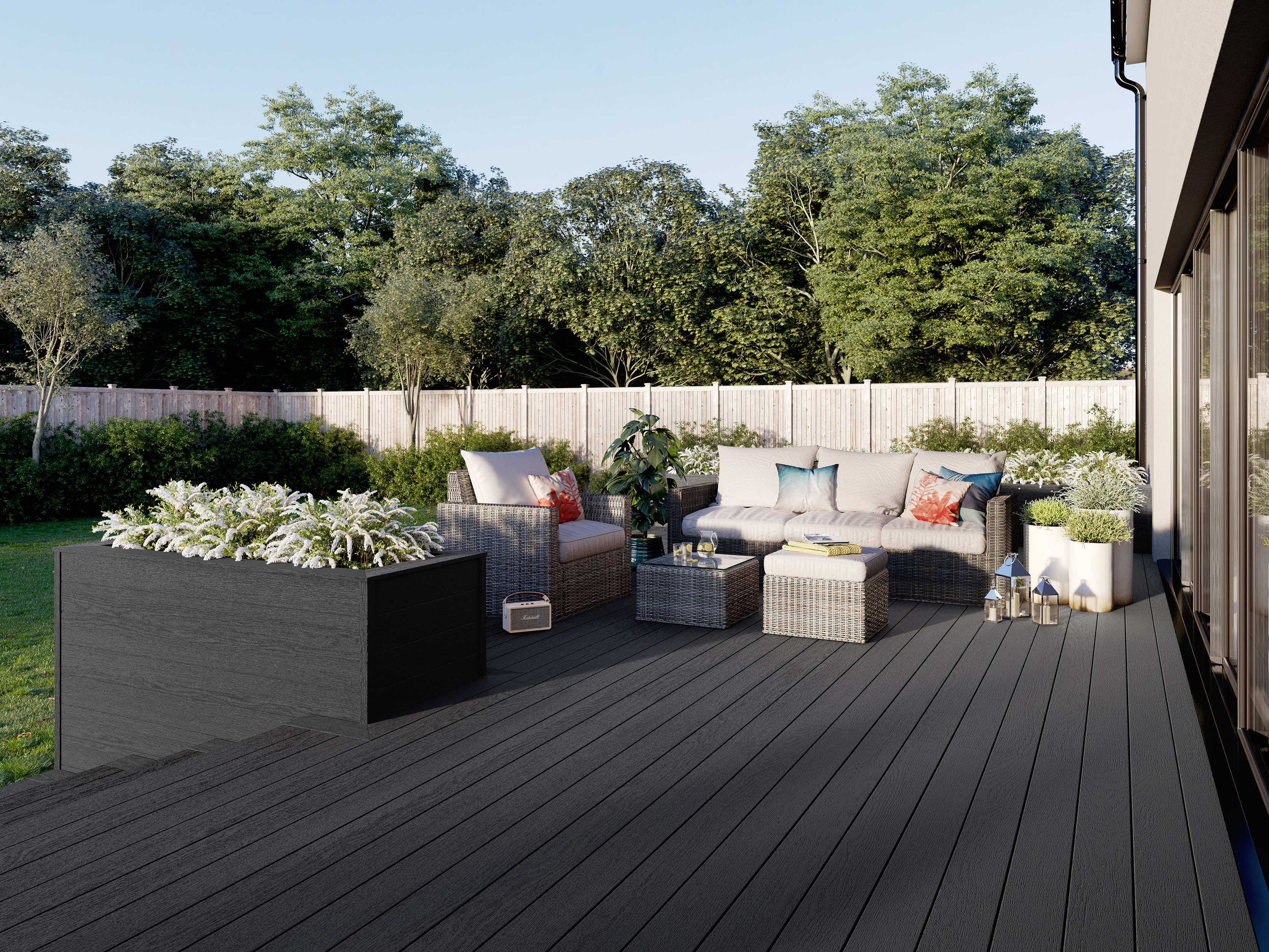

Decking’s a popular option for garden landscaping – and no wonder. The best decking works in gardens big and small, and those with thoroughly modern credentials and planting as well as more traditional layouts, blooms and greenery.
You can lay decking to create anything from a compact patio to extensive landscaping and for areas at every size in between. It blends in with the surroundings easily, too, because it’s either made from wood or, if it’s composite decking, looks like wood, and this can also make it appealingly warm in appearance.
The decking on our list includes both timber and composite designs in a range of shades to suit everyone’s outdoor space. Keep scrolling for all the options – we also have a best composite decking guide for those who know that's what they want already.
Best decking 2021
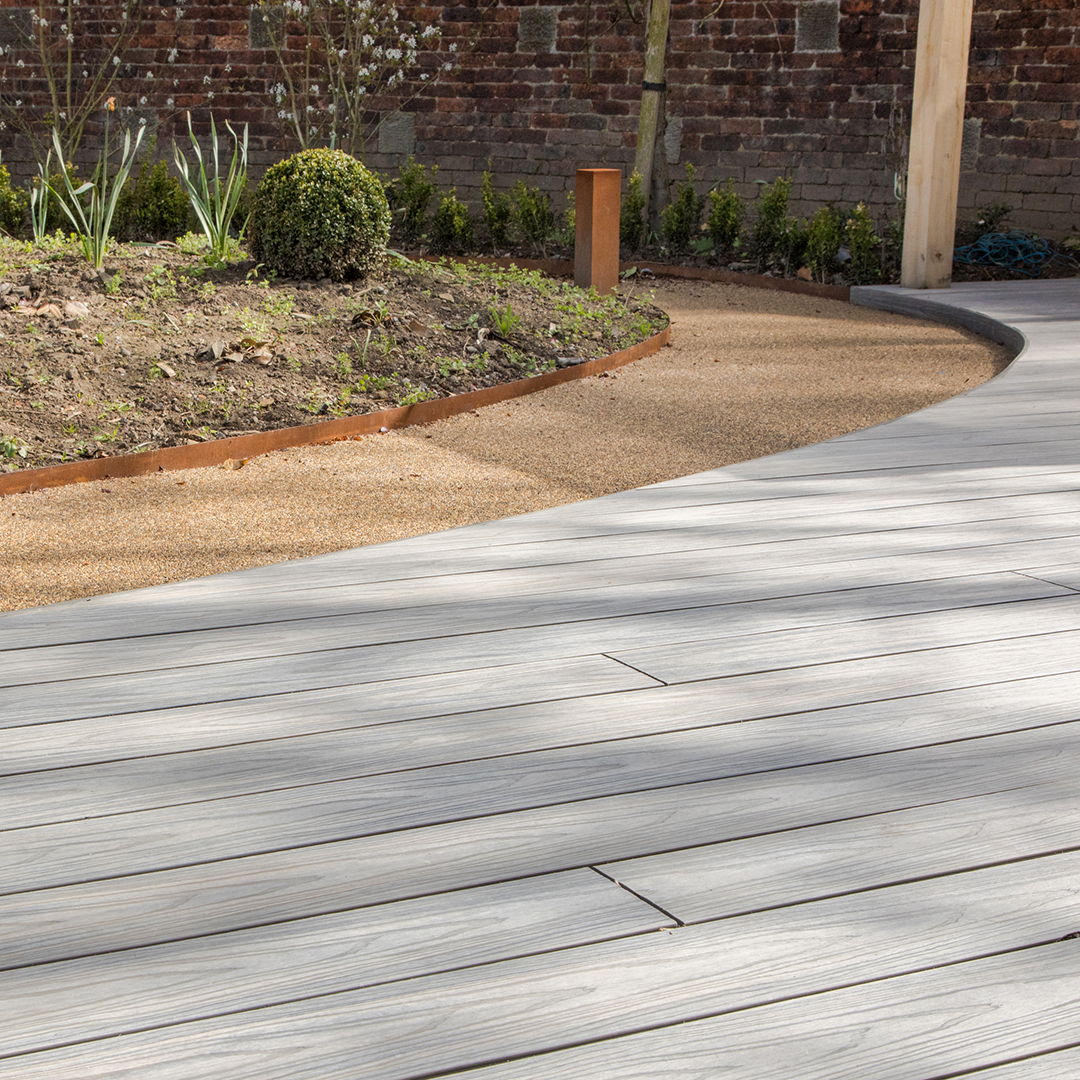
1. Composite Prime HD Deck Dual
Specifications
Reasons to buy
Reasons to avoid
If you want to get creative with your deck design, Composite Prime HD Deck Dual is our top pick. The reversible boards let you build a bespoke seating or dining area.
What’s it made from?
This is composite decking – that is a composite of wood and plastic. It’s made using recycled plastic and the wood part is wood flour, a by-product of the wood manufacturing industry. It comes from 100% sustainable timber from FSC-managed sources.
Care needs
Brush from time to time to clear debris like leaves, pollen and dirt. You could use an organic patio cleaner such as Algon or a sodium percarbonate oxygen activated bleach if required.
Colour options
The colour shown is antique, and the reverse is carbon. There’s also a walnut and oak colourway. With reversible boards, you can lay your deck with contrasting colours, or make a contrasting border.
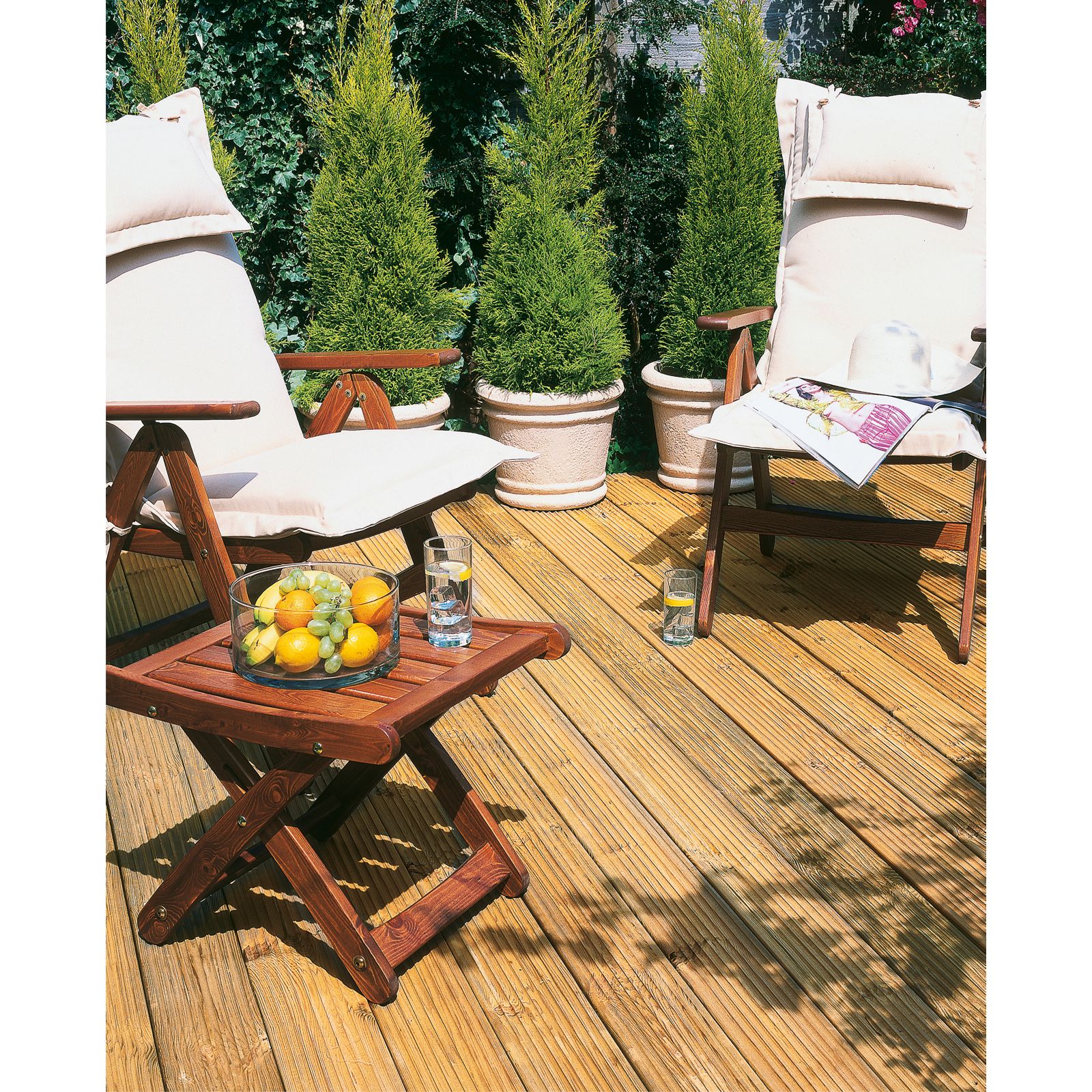
2. Homebase 2.4m Patio Deck Board
Specifications
Reasons to buy
Reasons to avoid
For a classic deck with natural colour variations, check out Homebase 2.4m Patio Deck Board. You can fit it yourself or call on a friend to help.
What’s it made from?
This is softwood decking and it has a 15 year guarantee. The advantage of this timber is that it’s easy to work with so laying your deck can be a DIY job.
Care needs
Keep the deck debris free – brushing it off, and pruning overhanging shrubs and trees will help. You’ll also need to treat it annually with decking stain, varnish or paint to prolong its life.
Colour options
Just this natural shade, which may be subject to colour variations. You could easily change it with a stain, varnish or paint, though.
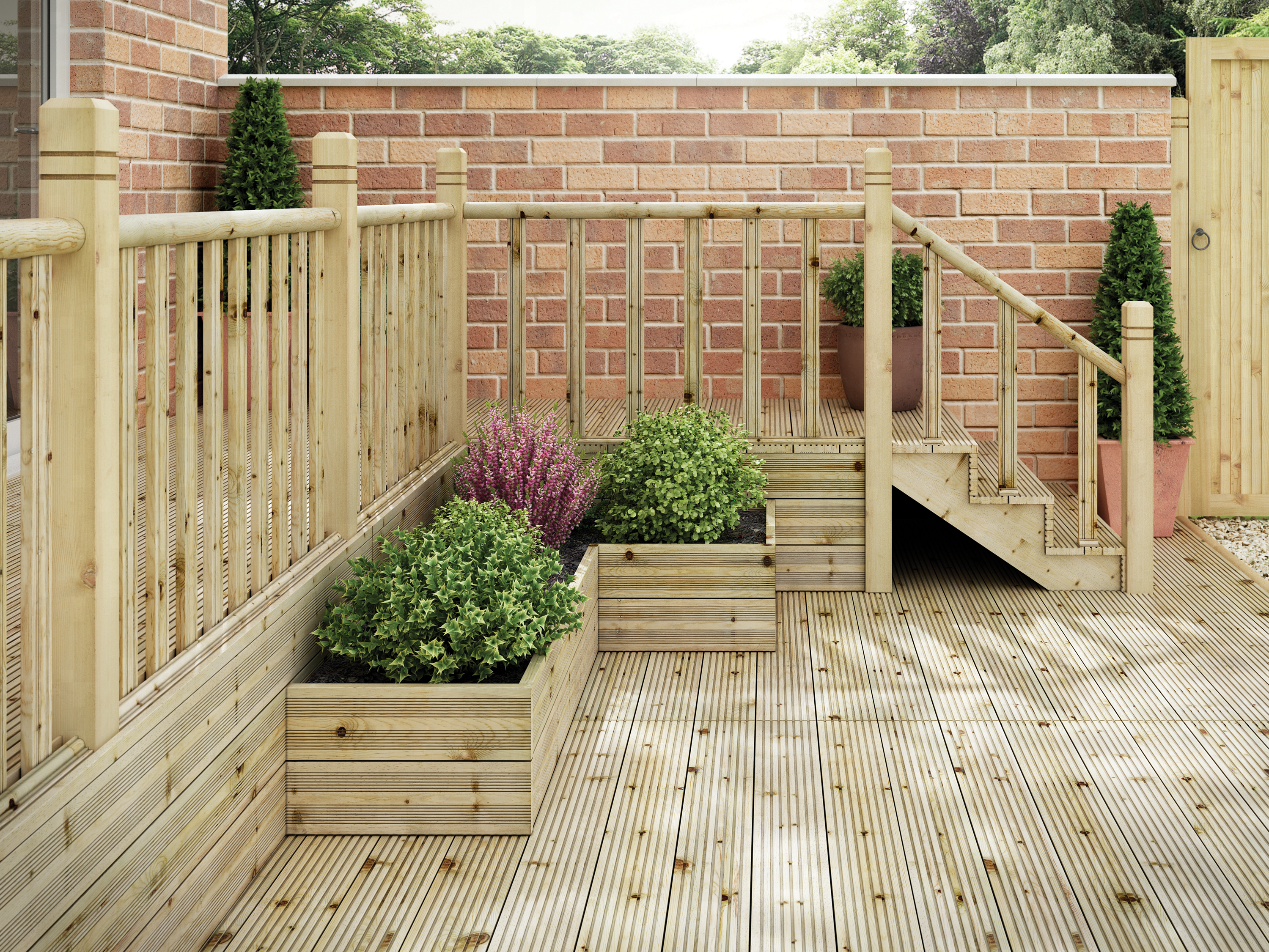
3. Wickes Premium Deck Board
Specifications
Reasons to buy
Reasons to avoid
Designed to be durable with a 28mm depth, Wickes Premium Deck Board is still a great value choice and it has a dual profile so you can get an individual finish.
What’s it made from?
These boards are made from slow grown European pine chosen to create a stable result. It’s been pressure treated, which gives softwoods longer lifespans, and it’s also FSC certified.
Care needs
You’ll need to use deck seal on these boards right away and before you build your deck. After that you’ll need to keep it clean and re-coat all sides with deck seal, oil or stain every so often to keep it in good shape.
Colour options
It comes in its original wood tone but you can change the colour easily if you want to with your choice of treatment.

4. Trex Enhance Composite Grooved Decking Board
Specifications
Reasons to buy
Reasons to avoid
For a garden feature that draws the eye, take a look at Howarth Timber & Building Supplies Trex Enhance Composite Grooved Decking Board shown here in Calm Water, which has the appearance of tropical hardwood but is easy to keep looking fabulous.
What’s it made from?
This composite decking is made from timber plus plastics. It’s 95% recycled.
Care needs
Use a composite deck cleaner or soap, hot water and a soft bristle brush. Cleaning’s best done half yearly in spring and autumn.
Colour options
Calm Water is a deep grey colourway with the appearance of tropical hardwood and modern credentials. The Trex Enhance range includes a further five colours in grey and brown tones offering plenty of choice. It’s ideal for a deck immediately outside the rear or the house or a new rear extension, complementing contemporary living, dining and cooking spaces.
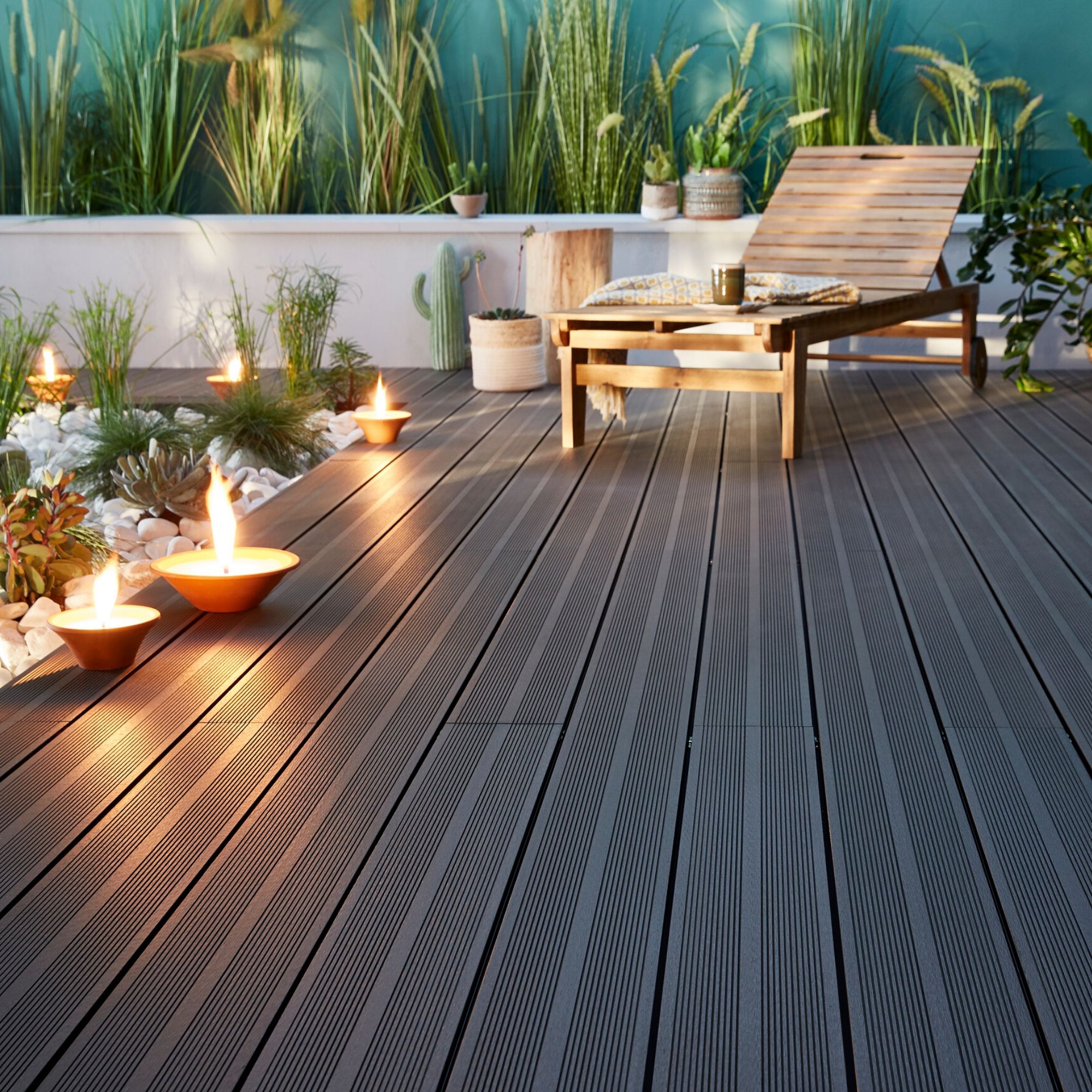
5. B&Q Neva Anthracite Grey Composite Deck Board
Specifications
Reasons to buy
Reasons to avoid
Complement a contemporary garden design with B&Q Neva Anthracite Grey Composite Deck Board. The style and shade are bang up to date.
What’s it made from?
It’s a composite decking, made from 95 per cent recycled materials (a combination of plastic and wood dust from re-used oak furniture).
Care needs
You can brush off any accumulated debris, and to clean it just needs a wipe with warm, soapy water. Easy. Some customers report that the labels it comes with are hard to remove.
Colour options
We like this anthracite grey, which is bang on trend and could be a great match to window and bi-fold door frames in the same shade. But there is a paler grey as well as a brown version.
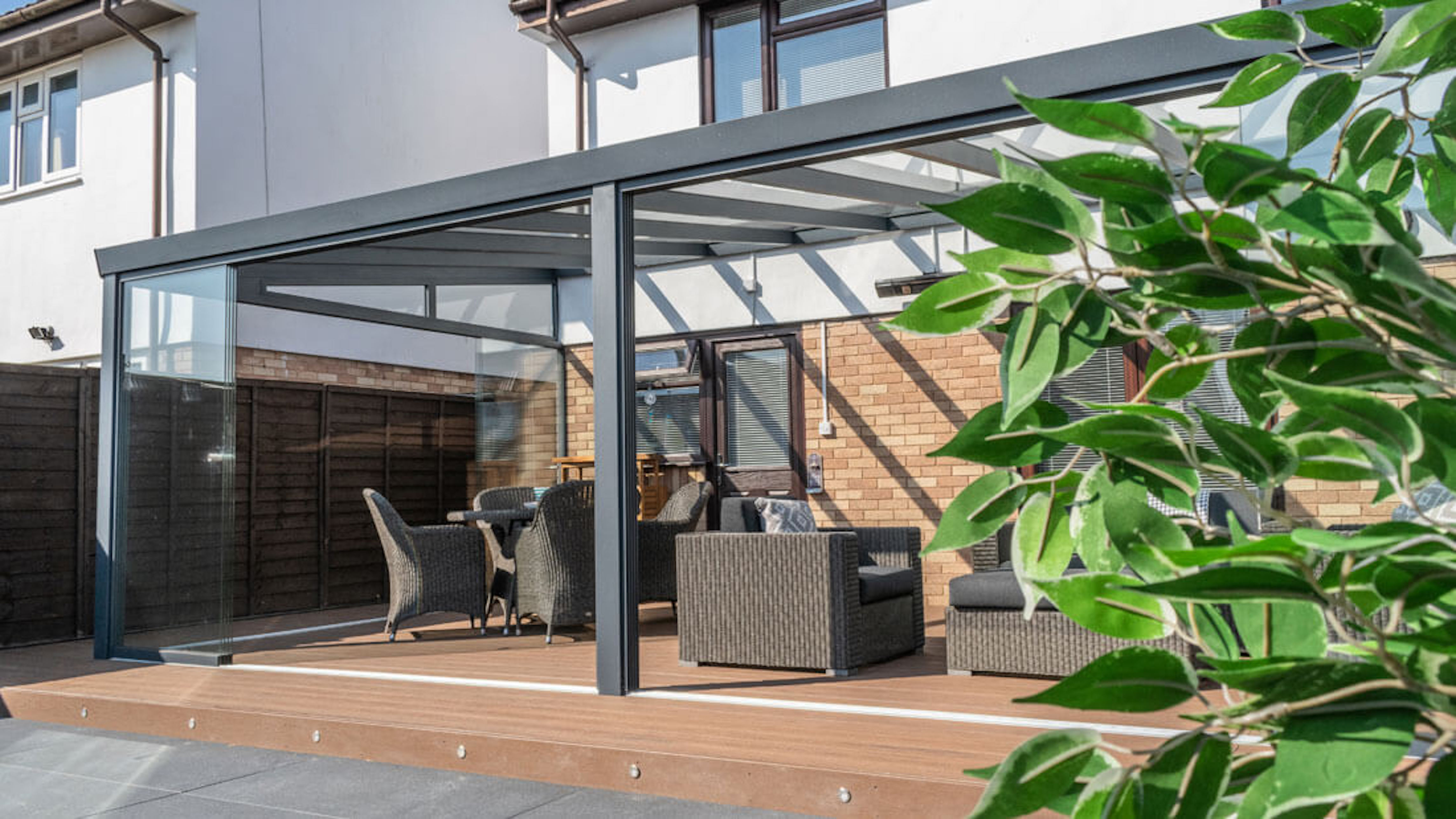
6. DeckPlus EasyClean Edge+ Oak Decking
Specifications
Reasons to buy
Reasons to avoid
DeckPlus EasyClean Edge+ Oak Decking is designed with variegated colouration and straight grain patterns to give it an authentic appearance.
What’s it made from?
This decking is a wood plastic composite that blends synthetic materials with natural wood fibre.
Care needs
You’ll just need to wipe to get this decking clean. We’d also advise brushing the deck from time to time to stop any debris and leaves accumulating on its surface.
Colour options
There’s a sea salt grey version of these boards also available that would work beautifully in a contemporary garden design. We think the oak finish is great for both classic and modern gardens.
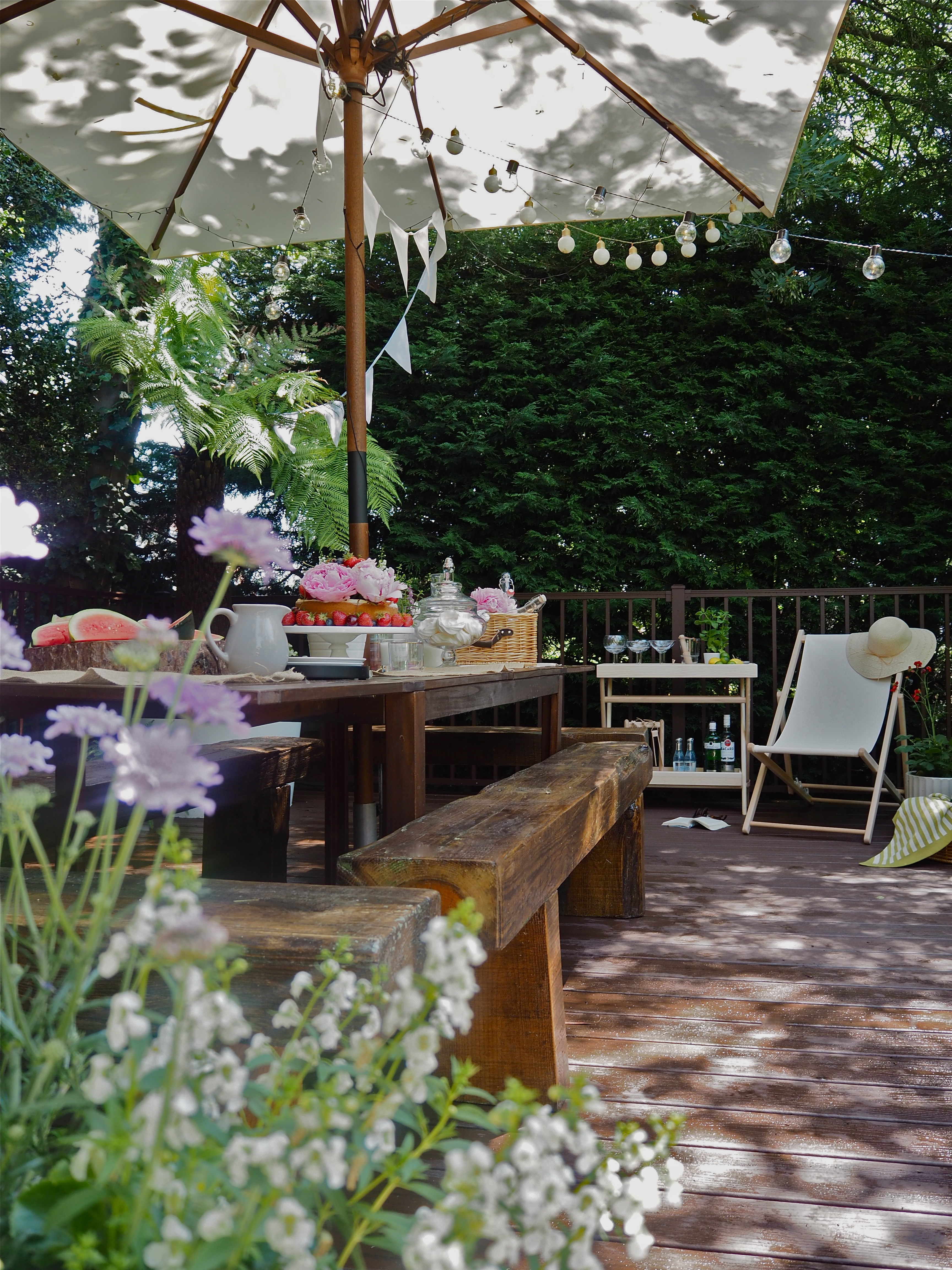
7. Trex Transcend composite decking
Specifications
Reasons to buy
Evoke distant shores with Trex Transcend decking shown here in Lava Rock. The warm coloured hardwood lookalike is perfect as a backdrop to summer dining.
What’s it made from?
This is a composite deckboard with 95% recycled wood fibres and plastic, which includes many common household items such as retail bags and newspaper sleeves.
Care needs
It’s easy to look after. Use soap, hot water and a soft brush, or a composite deck cleaner ideally when it’s installed then twice a year to keep this decking looking its best.
Colour options
Lava Rock is a very warm toned colour and complements hues of orange and red in planting and furniture, but also looks equally good contrasted with cooler coloured blooms. This range is available in different shades including cool greys and warmer natural wood tones.

8. B&Q GoodHome Madeira Spruce Deck Board
Specifications
Reasons to buy
Reasons to avoid
It’s straightforward to lay B&Q GoodHome Madeira Spruce Deck Board yourself, and you can choose from the two different profiles of the reversible boards to make your deck bespoke.
What’s it made from?
This is spruce softwood decking. The wood is slow grown and the timber is kiln-dried and treated to prevent the shrinking and warping that occurs naturally to wood. It has a 10 year guarantee.
Care needs
As this is softwood decking it will need regular treatment with a paint, stain or oil to maintain its good looks.
Colour options
These boards are available in this paler finish and a warmer brown version. They also have a different texture on each side with different groove patterns. When you’re designing your deck you can make it individual with the alternate side to create a trim or different zone.
How to buy the best decking 2021
Picking the right decking for your garden will depend on a few factors, including whether you have a preference between wood or composite designs – which could well be influenced by how much time you want to spend on maintenance – if you’re after decking that’s easy to fit yourself, and what your budget is.
Decking type
The vast majority of decking is either timber or composite. When it comes to timber, you have the choice between softwood or hardwood versions. Softwood decking – made from trees such as pine and spruce – is widely available at economical price points. Make sure you look for boards that have been pressure treated with preservatives to protect them from the environment and fungal and insect decay. For the DIYer, softwood decking has the boon of being easy to work with.
Hardwood decking is made from trees such as oak or beech or timbers from the tropics. It is more difficult to work with than softwood, and will cost more, too. It is, though, highly durable.
Composite decking is made from wood fibre and plastic – and may contain a very high proportion of recycled materials. It comes in a range of colours. It is generally more costly than softwood decking.
Colour options
If you opt for softwood, you can stick to its original wood shade or transform it with paints, stains or oils. This way, you can get the appearance of a hardwood or add colour to get the look you love. It’s also easy to go for a different finish in the future. Harwood decking has the characteristic colour of the timber from which it’s made, which is likely to be part of its appeal. Composite decking comes in a range of colours, but you won’t be able to change it down the line.
Caring for your deck
Both softwood and hardwood decking need more maintenance than composite boards, which may be a major factor in your decision about which decking to buy. For both you’ll need to brush and clean the deck and then re-treat it from the range of options available for the particular type. If you’ve gone for a composite, you’ll still want to keep the deck debris-free and clean it, but you won’t need to use oil, stain or paint.
Decking profile
Consider the profile of the deck boards. They can be plain, ribbed or grooved. Grooves help drain the deck but debris and dirt will need sweeping out of them. Boards with different profiles on each side can help you create an attractive design. If you have little ones or those who might easily slip, consider a decking board with inserts that provide extra grip.
More decking tips:

Sarah is a freelance journalist and editor writing for websites, national newspapers, and magazines. She’s spent most of her journalistic career specialising in homes and gardens and loves investigating the benefits, costs and practicalities of home improvement. It's no big surprise that she likes to put what she writes about into practice, and is a serial house revamper.
